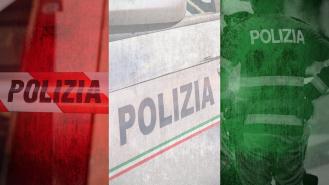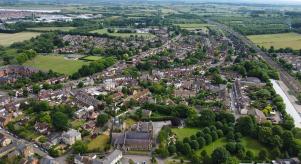
’Ndrangheta: Italy's most powerful mobsters
In January 2021, dozens of high-level figures – including businessmen and politicians – were arrested in a massive pre-dawn swoop in Catanzaro, Calabria. The arrests took place against the backdrop of Italy’s biggest mafia trial in decades, with hundreds of people, lawyers and accountants among them, facing charges of murder, extortion and drug trafficking.
But all of this has nothing to do with the Cosa Nostra, the Sicilian-based mafia made famous by The Godfather. Times have changed, and the mob organisation now most likely to make its rivals sleep with the fishes is the ’Ndrangheta, one of the biggest criminal enterprises in the world. In 2013 alone the ’Ndrangheta turned over €53 billion, which was greater than McDonald’s and Deutsche Bank combined. As mafia writer Alex Perry said in an interview with Slate.com, the organisation ‘smuggles 70% of the cocaine in Europe. It runs arms all around the world. It embezzles tens of billions from the European Union and the Italian government.
The ’Ndrangheta – pronounced ‘en-dran-ghet-ah’ – has a long history, its roots going back to at least the 19th Century. For much of its existence, it was relatively obscure, concentrating its activities within the Calabria region of southern Italy. There were violent flare-ups that made headlines, such as the internal war between rival families which claimed around 233 lives in the mid-1970s. And then there was the ’Ndrangheta’s audacious 1973 kidnapping of the grandson of oil billionaire J. Paul Getty (to convince the family to pay the multi-million ransom, the mobsters cut off the teenager’s ear and posted it to a newspaper).
Since then, the ’Ndrangheta has expanded its scope of operations to become shockingly wealthy and influential, sucking vampirically on the resources of cash-strapped Calabria and Italy in general. It has skimmed money from construction projects, committed complex fraud to get its hands-on EU funds, and infested Italy’s healthcare system. The Financial Times recently revealed how the mobsters even access medical records to coerce the families of dying patients to use ’Ndrangheta-affiliated funeral companies.
The ’Ndrangheta’s activities go well beyond Italy’s borders, and it effectively operates as a complex, multinational conglomerate. In the words of INTERPOL, it ‘has acquired control of companies both directly and indirectly across all sectors including construction, catering, transport, gaming and betting, waste collection and disposal businesses.’
So much money is being made that the ’Ndrangheta has been able to fund countless legitimate businesses. Mobsters’ family members go to the most exclusive and expensive schools and have established careers as bankers, lawyers and doctors. But behind it all, the ugly, bloody business of drug trafficking has remained key to the incredible growth of the ’Ndrangheta.
Crucial to its success is the mass distribution of cocaine across Europe, which it orchestrates thanks to close ties with drug cartels in Central and South America. The Calabrian port of Gioia Tauro is one of the key gateways the organisation uses. In November 2019, Italian officials discovered €250 million worth of the white powder hidden in a case of bananas stashed in the port. In the words of Europol, it confirmed the port is a ‘major hub for the transit of cocaine trafficked in Western Europe’.
Speaking to the Spiegel International news website in 2012, a member of the ’Ndrangheta called Vincenzo calmly described how the organisation sends money to the Latin American cartels by disguising them as legitimate payments for things like machinery, furniture, or even charitable donations to aid projects. Such money is paid in advance. ‘If they don’t deliver, we kill them.’
One of the challenges faced by law enforcement when dealing with the ’Ndrangheta is that it’s been far more difficult to penetrate compared to, say, the Cosa Nostra. That’s because the numerous families, or n’drine, which make up the organisation are indeed literal families, with members bound by blood relationships or strategic intermarriage. The hereditary nature of ’Ndrangheta membership means there’s a natural, instinctive loyalty at play – far more so than was ever seen with the Cosa Nostra. Indeed, according to data amassed by the Italian courts, until 2008 there had been around 1,000 mobsters in the Cosa Nostra who’d broken the vow of silence to talk to the police, compared to only 42 ’Ndrangheta who’d done the same.
Such is the sense of closeness and loyalty in the ’Ndrangheta world, that any violation – or perceived violation – can be dealt with savagely. In 2015, news broke that one ’Ndrangheta member had been charged with arranging the murder of his own mother when he discovered she’d had an affair with someone in a rival n’drina. It’s little wonder that prosecutor Nicola Gratteri, the arch-nemesis of the ’Ndrangheta who has been investigating the mobsters for decades, has lived under intense armed guard since 1989, saying: ‘I haven’t been to a restaurant for more than 20 years and haven’t gone to the cinema for more than 30 years. I am always closed away. I eat in the office. My house is essentially a bunker.’
Is the tide now finally turning against the influence of the ’Ndrangheta, or is the organisation too parasitically embedded in the dealings of the world – too able to make offers nobody can refuse – to ever be dislodged? It all remains to be seen.






